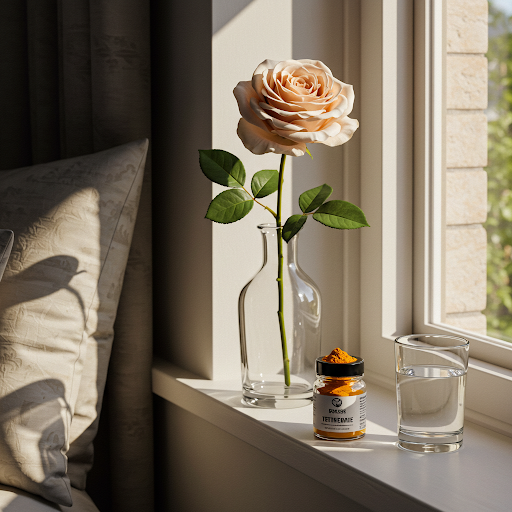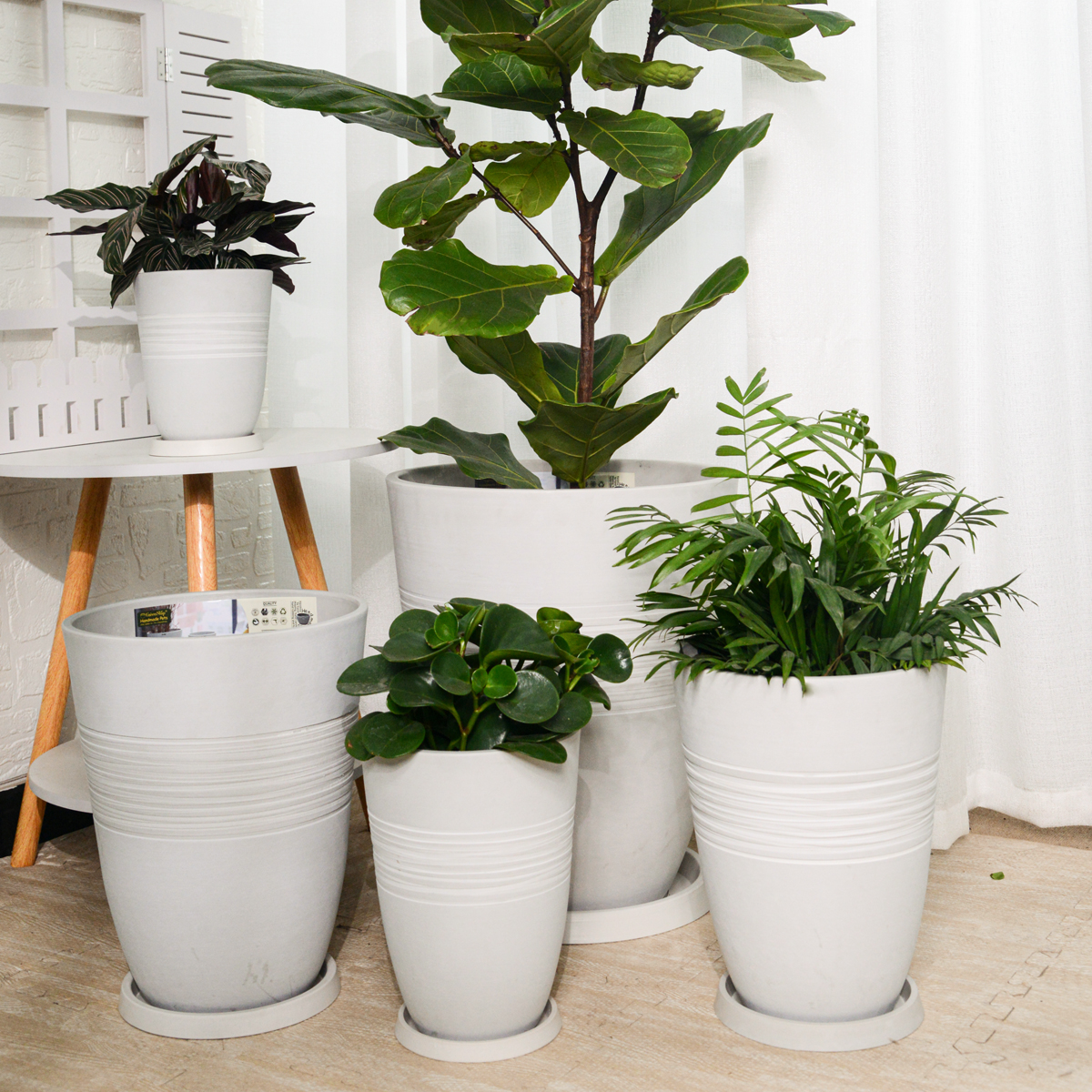Just 1 Teaspoon for Any House Flower, and It Turns Green Again and Blooms Lushly! A Simple Remedy!
Indoor plants, like all living things, are susceptible to various diseases that can impact their health, beauty, and lifespan. Common plant ailments like damping-off, gray mold, root rot, rust, and powdery mildew can weaken plants, leading to poor growth and, if left untreated, eventual death. While chemical fungicides and pesticides are available on the market, many plant enthusiasts prefer to use natural, eco-friendly alternatives to protect their beloved greenery.
One such natural remedy is turmeric – a well-known spice with potent antiseptic, antifungal, and antibacterial properties. Beyond its medicinal uses for humans, turmeric can also be an effective solution for preventing and treating plant diseases. It contains essential nutrients like iron, calcium, phosphorus, and antioxidants, which can boost plant immunity, improve soil quality, and promote vibrant, lush growth.

Why Use Turmeric for Your Indoor Plants?
Turmeric is more than just a culinary ingredient – it’s a natural powerhouse of bioactive compounds that have been used for centuries for their healing properties. When applied to plants, turmeric may act as a protective barrier against harmful pathogens, fungi, and bacteria, reducing the risk of infection and promoting overall plant health.
Here are the key benefits of using turmeric for your plants, according to the article:
- Prevents and Treats Fungal Infections: Many common plant diseases are caused by fungi, including powdery mildew, gray mold, and fungal wilt. Turmeric possesses antifungal properties that may help inhibit the growth of these pathogens.
- Acts as a Natural Antiseptic: It can help protect damaged or cut parts of the plant from bacterial infections, making it particularly useful for plants that have been pruned or injured.
- Boosts Plant Immunity: The minerals in turmeric, such as iron, phosphorus, and calcium, may contribute to the plant developing stronger cell walls and a more robust immune system.
- Improves Soil Health: Turmeric is suggested to help suppress harmful microorganisms in the soil while potentially promoting beneficial ones, leading to a healthier growing environment.
- Enhances Decorative Appeal: By preventing diseases and promoting healthy plant metabolism, turmeric may help plants maintain lush green leaves and vibrant flowers.
- Environmentally Friendly and Safe: Unlike synthetic fungicides and pesticides, turmeric is completely organic, non-toxic, and generally considered safe for children, pets, and pollinators.
How to Use Turmeric to Protect Your Plants
Turmeric can be used in several ways to prevent diseases, treat infected plants, and enrich the soil. Here are some of the most effective application methods suggested in the article:
1. Add Turmeric to Soil During Repotting
- When repotting or transplanting your plants, mix 1 teaspoon of turmeric powder per liter (approximately 4 cups) of soil.
- This can help prevent root infections and fungal growth, especially in moist conditions.
- Turmeric acts as a natural antifungal agent, protecting roots from rot and disease.
2. Prepare a Turmeric Spray Solution for Disease Prevention
- To make a protective spray for the foliage, mix:
- 1 teaspoon of turmeric powder
- 1 liter of lukewarm water
- Stir well and then pour the solution into a spray bottle.
- Gently spray the leaves, stems, and surrounding soil of your plants to help prevent fungal infections.
- Recommended Frequency: Spray every two weeks for preventative care.
3. Treat Infected Plants with a Turmeric and Milk Solution
If your plant is already infected with powdery mildew, rust, or gray mold, a more potent treatment might be needed:
- Ingredients:
- 2 teaspoons of turmeric powder
- 1 liter of lukewarm water
- 100 ml of milk (acts as a binder, helping the solution stick to the leaves)
- Preparation Steps:
- Mix the turmeric powder in lukewarm water and stir well.
- Add the milk and stir again.
- Strain the solution through a fine mesh or cloth to remove any clumps.
- Application: Pour into a spray bottle and apply directly to the affected areas of the plant.
- Recommended Frequency: Use once every two weeks or once a month, depending on the severity of the infection.
Which Plants Benefit Most from Turmeric Treatment?
While turmeric can potentially benefit almost all plants, certain species that are particularly prone to fungal and bacterial diseases may benefit significantly from regular turmeric treatments:
- Orchids: Helps prevent root rot and fungal infections common in humid environments.
- Roses: May aid in preventing black spot and powdery mildew.
- Tomatoes and Peppers: Could reduce the risk of Fusarium wilt and gray mold.
- Violets (Saintpaulias): May help prevent fungal infections on their dense foliage.
- Geraniums and Pelargoniums: Suggested to enhance blooming while preventing leaf rust.
- Succulents and Cacti: May help prevent root rot caused by overwatering.
- Indoor Plants like Pothos, Ferns, and Peace Lilies: Could boost immunity and improve foliage health.

Additional Tips for Using Turmeric in Plant Care:
To maximize the benefits of turmeric, follow these best practices:
- Test on a Small Area First: Before applying a turmeric solution to the entire plant, test it on a single leaf to ensure there are no adverse reactions.
- Apply in the Morning or Evening: Avoid spraying during periods of intense sunlight to prevent leaf burn.
- Use Filtered or Rainwater: This may enhance the effectiveness of the turmeric solution.
- Pair with Good Plant Hygiene: Remove dead leaves and maintain proper air circulation around your plants to reduce the risk of fungal growth.
- Avoid Overuse: While beneficial, excessive application of turmeric could potentially disrupt the soil microbiome. Stick to the recommended application frequencies.
Why Choose Turmeric Over Chemical Fungicides?
Many commercial plant treatments contain synthetic chemicals that can have harmful effects on the environment, beneficial insects, and human health. Turmeric offers a natural, cost-effective, and non-toxic alternative with several advantages:
- Organic and Eco-Friendly: Safe for the environment, pets, and children.
- Biodegradable: Breaks down naturally in the soil without leaving harmful residues.
- Affordable and Accessible: Readily available in most grocery stores and spice shops.
- Versatile Use: Can be used for disease prevention, treatment, and soil enhancement.
Conclusion:
Turmeric is presented as an effective and natural remedy for keeping your indoor plants healthy and disease-free. Its antifungal, antibacterial, and immunity-boosting properties make it a powerful tool in plant care. Whether used as a preventative measure or as a treatment for infected plants, turmeric offers a simple, safe, and affordable solution that every indoor gardener should consider incorporating into their plant care routine.
By using turmeric correctly and consistently, you can protect your plants, promote lush growth, and enjoy vibrant, thriving greenery in your home. Give this natural remedy a try and watch your plants flourish!
11V
By greenship|2024-08-13T03:05:48+00:00August 13, 2024|Categories: Hand-carving Series|
Modern Plant Pots with Drainage – Indoor & Outdoor Use (6″ Widths)
By greenship-seo|2025-04-10T06:29:43+00:00February 6, 2025|Categories: Hand-carving Series|Tags: Decorative Flower Pots|
KC2-11VH
By greenship|2024-08-16T06:19:28+00:00August 16, 2024|Categories: Hand-carving Series|
KC2-21G
By greenship|2024-08-13T06:19:08+00:00August 13, 2024|Categories: Hand-carving Series|
Modern Plant Pots丨Planter for Indoor Plants,8 inch or 10 inch Plant Pots with Drainage Hole,Decorative Flower Pots
By greenship-seo|2025-04-10T08:32:55+00:00January 7, 2025|Categories: Hand-carving Series|Tags: Decorative Flower Pots, Self-Watering Pots|
HS
By greenship|2024-08-13T06:45:17+00:00August 13, 2024|Categories: Hand-carving Series|






